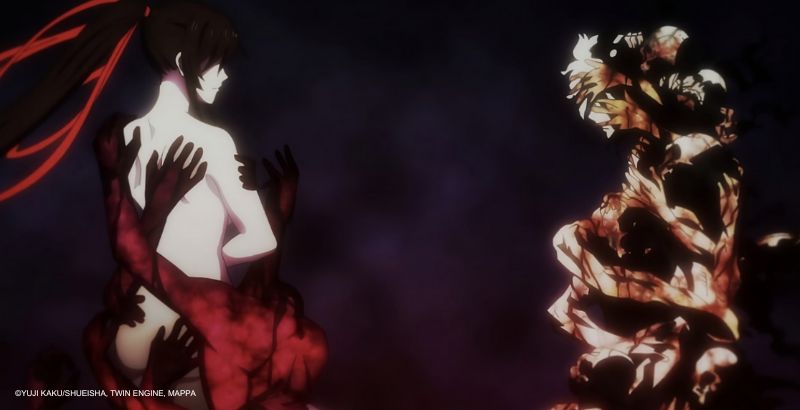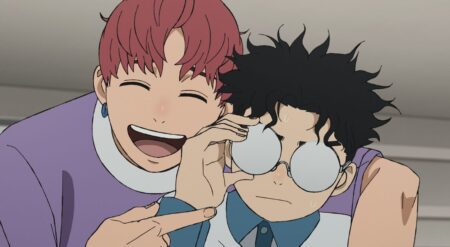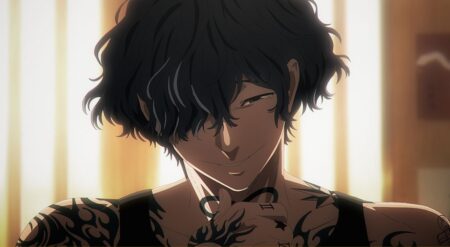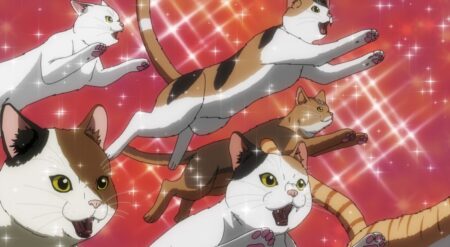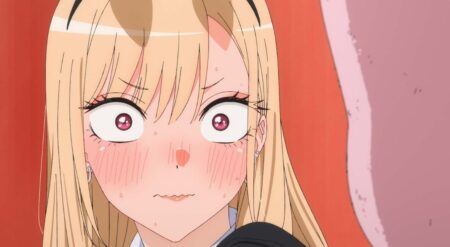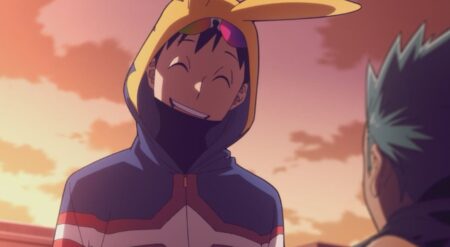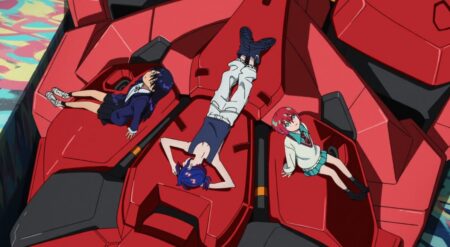Hell’s Paradise Season 1 was never going to be a sleeper hit. A Twin Engine and Studio MAPPA production, the series had one of the most sought-after studios adapting its story from Yuji Kaku’s Hell’s Paradise manga. Coming off of Chainsaw Man, another horror-adjacent series, everything was set up for success, and MAPPA knocked it out of the park. Bringing to life a series that uses body horror, religious elements, visceral death scenes, and great action while also capturing emotional depth in the characters it presents isn’t easy.
It wasn’t an easy balance for Kaku to capture in his original work, and it most certainly is a different beast when bringing it to life on-screen. That said, Hell’s Paradise Season 1 is a series that emotionally hits above its action-packed weight class and leaves a lasting impression.
If you’re unfamiliar, the hook of Hell’s Paradise Season 1 is that it’s essentially Suicide Squad in Feudal Japan. When the Shogun decides that he wants immortality and to get it he needs the elixir of life hidden away on an island no one has ever returned from alive, he assembles the most ruthless death row convicts sentenced to death to claim his prize. If they survive the island and bring it back, they are freed. If they don’t or they try to escape, their assigned Asaemon will execute them on the spot.
That’s what gets people in the door for the series, but much like Chainsaw Man, it’s the characters and their depth that keep you there. The main convict at the center of this story is Gabimaru the Hollow. Called such because of his hollowness that makes killing easy, he just won’t die. He’s been burned and survived. He’s had a sword crash down on his neck and survived. And, despite his hollow claims, he is very much tethered to the world, thanks to his wife. A killer denying his humanity.
The other central figure in the story is his assigned executioner, the Sagiri Yamada Asaemon. She is a woman doing a man’s job and has faced enough adversity in her life to fight to take someone’s life. The daughter of a neck chopper, she doesn’t have the standing or gender to be a samurai, but she can be an executioner. Even so, her rank is held back by the way people perceive her.
Unlike Gabimaru, she feels deeply. She sees the past of those she kills and offers them the release of death as an escape from their sin. But she struggles, learning to be okay with killing but also learning not to just kill. Gabimaru and Sagiri are a balance on a scale that is connected through comradery and mutual respect that builds over their time on the island but never ventures into romantic territory.
Gabimaru and Sagiri aren’t the only important parts of Hell’s Paradise Season 1, however. Instead, the series operates with a massive ensemble cast of convicts and their executioners. Each new character has a strong character design that leaves an impact visually against a vibrantly vile island. More importantly, the extended cast of the series also drives the emotional core of this action-driven story. Instead of making Sagiri and Gabimaru the nexus of every emotional moment, the narrative takes away characters we’ve known for one episode and those we’ve known from the beginning in equal measure.
In their deaths, MAPPA was able to capture and even exceed the deft storytelling involved in making you care for a character you’ve known for so little time. As an audience, we mourn the deaths of convicts and executioners we’ve met because we get to see into their lives. We see their struggles, the reasons why they became who they are, and in that, a bond is formed between us and them. It’s built only to be severed, but also to secure a space for each character in the series in our memories as anime fans.
Hell’s Paradise Season 1 is a series that emotionally hits above its action-packed weight class and leaves a lasting impression.
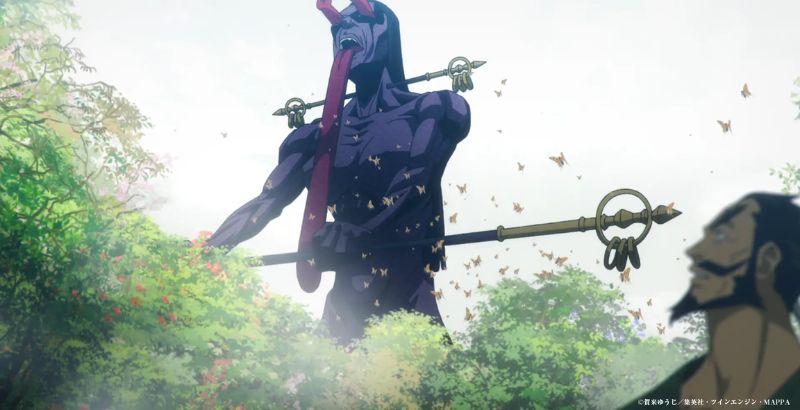
Additionally, MAPPA, like Kaku, also leaves space for bad convicts to just be bad people. Shaped by their circumstance, yes, but they are driven by selfishness and personal conquest nonetheless. This is particularly true for Chobe. We see why he hardened himself to the world and became the Bandit King, but at the same time, his brutality and temper keep him on the line of connection. We root for Chobe, but we root for him because of who he is up against, not because of who he is. Hell’s Paradise constantly balances morality against the personality of its characters, and because of that, it succeeds.
On the animation front, Hell’s Paradise is gorgeous. The beauty of the series comes from MAPPA’s ability to give as much attention and care to the grotesque elements of the series, like the creatures and gods, that let it highlight the beautiful designs too. The vibrant land is gorgeous and decadent, and the creatures that inhabit it are ugly, vile bastardizations of deities and organisms. Seeing the two against each other creates something unique that I think only MAPPA, with their experience on Jujutsu Kaisen and Chainsaw Man, could do justice.
The beauty of the series comes from MAPPA’s ability to give as much attention and care to the grotesque elements of the series
The only issue I have with Hell’s Paradise Season 1 is how empty its finale is. Only adapting about half of the 13-volume series, Episode 13 is just about setting up what’s to come next instead of ending on an explosive note. While I don’t think that every finale has to be earth-shattering, this series had the potential to do that. Instead, the season fades to black with an ominous future waiting. Without a verified Hell’s Paradise Season 2, I find myself questioning if leaving so much weight for a second season to pull was a good decision.
That said, Hell’s Paradise Season 1 is tremendous. It’s beautiful, thoughtful, and in moments, mean as hell. The series is everything that MAPPA does well but it just needed more.
Hell’s Paradise Season 1 is available to streaming exclusively on Crunchyroll with the English Dub.
Hell's Paradise Season 1
-
Rating - 8/108/10
TL;DR
That said, Hell’s Paradise Season 1 is tremendous. It’s beautiful, thoughtful, and in moments, mean as hell. The series is everything that MAPPA does well but it just needed more.

